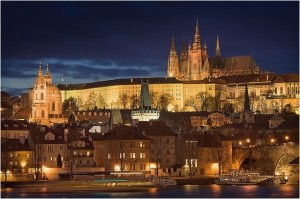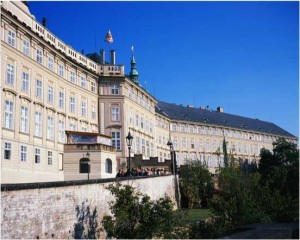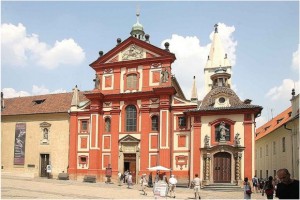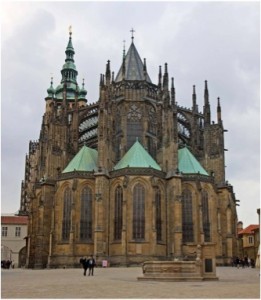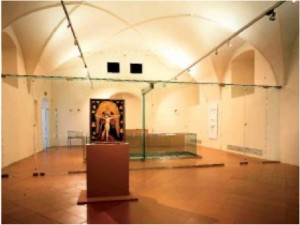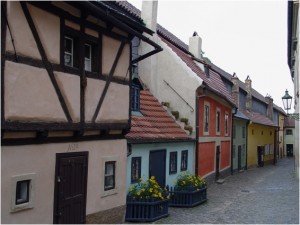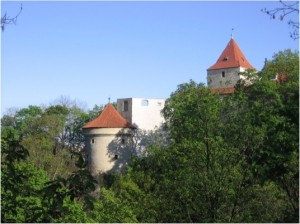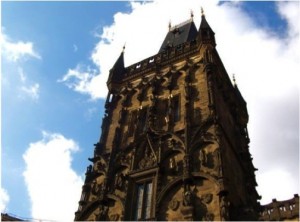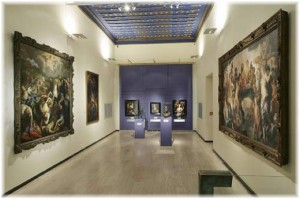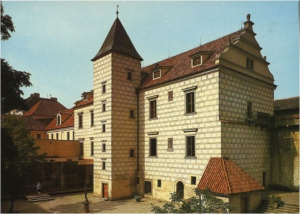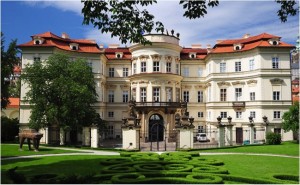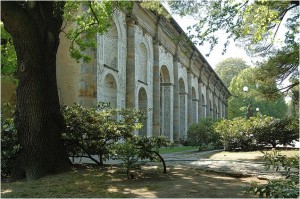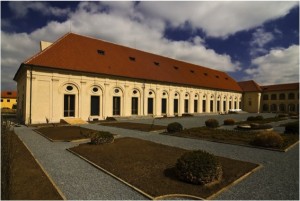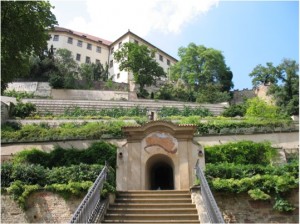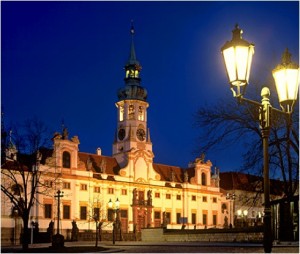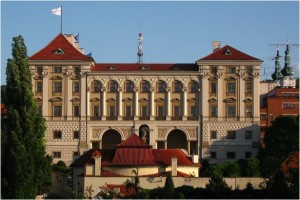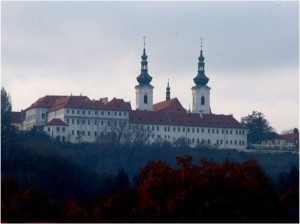 |
|
|||||
|
||||||
Places to visit... |
Prague CastleA castle was established on this site in the 9th century, and a Romanesque palace was erected in the 12th. Under the reign of Charles IV, in the 14th Century, the castle was rebuilt in the Gothic style. The final reconstruction of the Royal palace took place under the Jagellons at the end of the 15th century and at that time the builder Benedikt Rejt added the now-famous, Gothic style Vladislav Hall. After the fire in 1541 and during the 16th century the castle was enlarged. During the reign of Rudolf II, The Spanish Hall in the new part of the castle was added and it took its final form in the time of Empress Maria Theresa, under the direction of the Architect M. Pacassi. After World War I, Architect J. Plecník renovated the interior and gardens of the castle. Today the Castle is home to the President of the Czech Republic, and it serves as the historical and political center of city and state. Královský palác Starý (The Old Royal Palace) Up to the 16th century the residence of Bohemian princes and kings. It was built on relics of the Romanesque palace of the Prince Soběslav. Additional reconstructions in the Gothic and renaissance styles were initiated by famous Czech kings Přemysl Otakar II, Charles IV, Wenceslas IV and Vladislav Jagelonský. The most noteworthy space is the gothic Vladislav Hall – the largest profane hall of the medieval Prague (1487 – 1500 Benedikt Rejt) with a remarkable rounded rib vault, today the scene of presidential elections and representative events. In the Gothic and Romanesque storey there is a new permanent exposition ‘Story of the Prague Castle’. Klášter svatého Jiří s přilehlou bazilikou sv. Jiří Was founded in 973,the convent was next to the seat of ecclesiastical and state power in Bohemia and occasionally the entire Holy Roman Empire, and played an important historical role. Although no longer active, the convent’s building and the attached Basilica dedicated to Saint George still exist; the building now houses the Czech National Gallery’s collection of 19th century Bohemian art. Katedrála svatého Víta, Václava a Vojtěcha This Gothic cathedral is the spiritual symbol of the Czech state, founded in the year by Jan Lucemburský (John of Luxembourg) and his sons Karel and Jan Jindřich. It took nearly six centuries to build. Begun in 1344 by Mathias Arras and Petr Parléř upon the site of a 10th-century rotunda, the final phase of construction ended only in the period 1873-1929. The cathedral contains undergrounds tombs of Czech kings. Petr Parléř also built St. Wenceslas Chapel, which is decorated with frescoes and semi-precious stones. The coronation jewels are deposited here, too. Císařská konírna (Imperial stable) Located at ground level of the northern wing of the Castle contains an exhibition hall. Zlatá ulička (Golden Lane) Small houses built in the Gothic fortification, the 16th century homes of castle riflemen and craftsmen. Between 1916-1917 Franz Kafka worked in No. 22. Daliborka (The Daliborka Tower) A military tower built in 1496 by Benedict Rejt as a part of the castle fortifications, and used as a jail till the end of 18th century. It was given its name after the first prisoner Dalibor of Kozojedy. It was Dalibor’s story which was put to music by Bedřich Smetana in his opera Dalibor (1868). Prašná brána (The Powder Tower) The diameter of which is 20 m, comes from the 15th century, part of the castle fortifications. It was used at various periods to store gunpowder. It houses exhibitions of medieval arts and crafts, astrology and alchemy from the time of Rudolf II. Královská galerie (Castle Gallery) In the place of what were once stables, a gallery was built at Prague Castle. Many paintings from Rudolf II’s gallery were rediscovered and identified only in 1961-62, including works by Tizian, Tintoretto, Rubens, Czech Baroque Art and others. Purkrabství (The former Burgrave’s House) Is 16th century Renaissance building houses a museum of toys. Lobkowiczký palác (Lobkowicz palace) The Pernstein family began construction of this palace in the mid-16th century. In 1627 it became the property of Polyxena of Lobkovic and was rebuilt in 1651-68 by Carlo Lurago in the form seen today. Since 1983 it has been a part of the National Museum, containing monuments of Czech history including copies of the coronation jewels. Míčovna (Ball Game House) Is the most exquisite piece of architecture in the Royal Garden, was the place where Habsburg played various ball games. It was built especially for an early version of badminton coming from Italy, that became the most popular ball game in whole Renaissance Europe. As soon as badminton went out of fashion, the Ball-Game House was converted into stables and today is open for exhibitions. Jízdárna Pražského hradu (The Prague Castle riding hall) A baroque building from the late 17th century, today a place of exhibition. Letohrádek královny Anny (Queen Anna’s Summerhouse) Is perhaps the most remarkable Renaissance building in Prague, this palace was built on plans of Paolo della Stella in 1538-1560, finished by architect Wohlmut. The famous Singing Fountain, whose drops of water make music, is in the garden and was designed and cast by Tomáš Jaroš in 1564-68. Zahrady Pražského hradu (The Prague Castle Gardens) The Royal Garden was founded in 1534. South Gardens – Paradise, On the Bastion, On the Riding Hall Terrace, Upper and Lower Deer Gully and Masaryk Vista. As a rule the gardens are opened at 10 a.m. by fanfares from the Hartig Music Pavilion. Loreta – Prague 1, Loretánské náměstí 7 This former place of pilgrimage with the copy of Santa Casa was built in 1626-31, and the Baroque Church of the Nativity of Our Lord was added in 1734-35. The facade of the front wing was rebuilt by K. I. Dienzenhofer in 1720-22. The tower contains 27 loretto bells which play a Marian song We Greet You a Thousand Times (every hour from 9 am to 6 pm). The most valuable item of the liturgical treasury is the so-called Prague Sun, a monstrance weighing over 12 kg and embellished with 6,222 diamonds. Černínský palác (Czernin Palace) This early Baroque palace, now the Ministry of Foreign Affairs, was built by Francesco Caratti in 1669-87. Its garden is open to the public from time to time in the summer months. Strahovský klášter (Strahov Monastery) A Monastery of the remonstratensian Order at Strahov, originally in Romanesque style, including the Church of Our Lady and the Strahov Library.The Library contains an early Baroque Theological Hall from 1671-79 and a Classicism Philosophical Hall from 1785-94, decorated with frescoes by A. Maulbertsch. |
|||||
|
||||||
|
|






